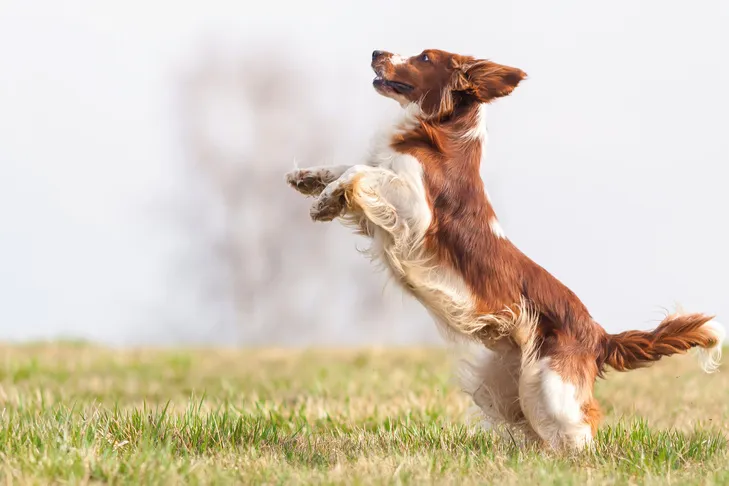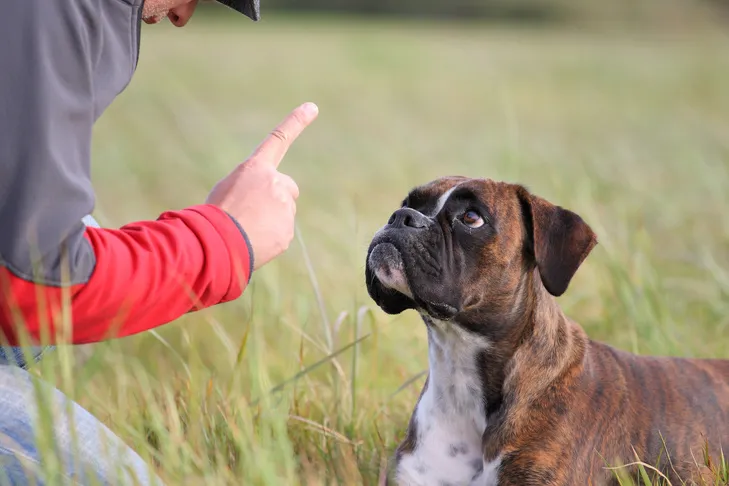Jumping up on people is a common dog behavior that many owners find challenging. While it stems from a natural canine desire to greet you face-to-face and get attention, it can be annoying, inconvenient, and even dangerous, especially for children or the elderly. Even smaller breeds can leave scratches or muddy paw prints on clothing. The key to resolving this issue isn’t to punish the natural instinct, but to teach your dog a more polite alternative way to say “hello.” By establishing a clear “four paws on the floor” greeting rule, you can guide your furry friend to understand appropriate behavior. These 10 essential tips will help you successfully teach your dog to stop jumping up and ensure enjoyable interactions for everyone.
Establish a Clear Greeting Rule
The most effective way to address unwanted behaviors is to teach your dog an incompatible alternative. This means focusing on what you want your dog to do, rather than just what not to do.
1. Only Greet Your Dog When They Have Four Paws on the Floor
Your dog learns faster when they are shown what to do. If your rule is “four paws on the floor,” then only engage with your dog when all four paws are grounded. You might prefer them to sit or lie down for greetings. Whatever behavior you choose, be consistent. If you allow jumping in some situations (e.g., when you’re wearing old clothes) but not others, your dog will become confused and continue to test boundaries.
2. Give Immediate Attention for Correct Behavior
Dogs naturally repeat behaviors that lead to desirable outcomes. Therefore, as soon as your dog follows your greeting rule, provide immediate praise and petting. Your attention is a powerful reward, so make sure they receive it promptly when they’re doing the right thing, especially during the learning phase. Avoid delays, such as removing your coat or shoes first, as your dog might become impatient and revert to jumping for attention. This immediate feedback helps them connect their good behavior with your positive response, reinforcing the desired action.
Discourage Unwanted Jumping Effectively
Addressing jumping requires clear communication that the behavior will not achieve the desired outcome.
3. Remove Attention When Your Dog Jumps
Conversely, to stop jumping, you must stop rewarding it. If your dog jumps on you, immediately withdraw your attention. Turn your back or calmly walk away, demonstrating that jumping has the opposite effect of what they intend. The moment your dog returns to having all four paws on the floor, turn back and quietly offer praise and a gentle pet. This teaches your dog that their behavior acts as a switch, controlling whether or not they receive your attention. Consistency in this approach is crucial to help them understand how to how to stop your dog jumping up people.
 Welsh Springer Spaniel jumping up outdoors.
Welsh Springer Spaniel jumping up outdoors.
4. Set Up Your Dog for Success
While ignoring jumping and rewarding proper greetings is effective, it can be frustrating for dogs as it relies on trial-and-error. Make it easier for them to succeed. If your rule is to sit, ask them to sit as soon as you enter. If it’s four on the floor, encourage them to stay standing. A highly effective method to prevent jumping is to scatter treats on the floor. Most dogs can’t resist a free snack, and they can’t jump while sniffing the ground. You need to be quick, but by offering food before they even consider jumping, you reward their four-on-the-floor behavior with both attention and treats. Your dog will quickly grasp the greeting rule, and you can gradually phase out the food. This proactive approach supports teaching a dog to stop jumping up more quickly and positively.
Consistency and Positive Reinforcement
Your dog will learn appropriate greeting behavior more rapidly if their actions immediately influence your attention.
5. Always Reward Proper Greeting Behavior
It is vital that your dog’s good behavior consistently earns your attention—four paws on the floor means attention, while jumping makes it disappear. Never withhold your attention when your dog finally settles, even if you’re annoyed after five minutes of jumping. Inconsistency will confuse your dog and hinder their learning process. Always reinforce the desired behavior to solidify the rule.
6. Avoid Physical Confrontation
Remember, your dog jumps for attention. Even a negative physical response, such as grabbing, holding their paws, or pushing them away, is still a form of attention. This can inadvertently reinforce the jumping behavior, potentially increasing its frequency in the long run. Worse, for many dogs, physical contact can be misinterpreted as an invitation to roughhouse play, leading them to jump harder and stronger, thinking it’s part of a game. This is why gentle redirection is key to successfully addressing how to stop a dog jumping up at visitors.
 American Hairless Terrier jumping up on the leg of its owner outdoors.
American Hairless Terrier jumping up on the leg of its owner outdoors.
Foster Trust and Maintain Calm
Building a strong bond with your dog based on trust is paramount for effective training.
7. Never Use Your Knee to Block Jumps
You might have heard that raising your knee to block your dog’s chest when they jump can eliminate the behavior. However, this action can be misconstrued as attention or a wrestling game by some dogs, potentially worsening the problem. More importantly, it can erode the human-canine bond by causing distrust. Your dog is simply trying to greet you, and responding with punishment can be confusing and even cause injury. A dog that doesn’t trust you may develop other behavioral issues, such as ignoring commands or not coming when called.
8. Keep Greetings Low-Key While Your Dog Is Learning
Dogs, particularly when excited, find it difficult to control their emotions. Resisting the natural urge to jump and instead adhering to a new greeting rule requires significant emotional self-control. Make this easier for your dog by keeping your greetings calm and quiet. Dogs can mirror our emotions; if you are overly enthusiastic, they will be too. Start with a subdued approach, even when offering praise. As your dog begins to understand, you can gradually increase your enthusiasm until you can match their joy without triggering unwanted jumping.
Manage Interactions with Others
Your dog’s behavior is reinforced not only by you but also by other family members, guests, and even strangers.
9. Prevent Jumping on Guests
To ensure consistency in training, you must manage your dog’s interactions with others. Use management techniques like putting your dog on a leash so they cannot approach guests freely. Even better, teach your dog to go to their designated “place,” such as a mat or bed, or use their crate when visitors arrive, ensuring they are not near the door. Baby gates can also be effective in blocking access to entryways. These strategies help prevent situations where jumping might be inadvertently rewarded, reinforcing the desired behavior.
 Boxer laying down outdoors being trained by a man.
Boxer laying down outdoors being trained by a man.
10. Ask Guests and Strangers to Follow Your Greeting Rule
Do not hesitate to clearly communicate your dog’s greeting rules to guests and even strangers. While your dog is still learning, ask people to completely ignore your dog unless you indicate it’s acceptable to interact. Whenever possible, avoid interactions with strangers until your dog has consistently mastered polite greetings with friends and family who you know will cooperate with your training methods. Instead, use a “watch me” cue or distract your dog with a hand touch or a favorite toy until the stranger has passed. This consistent reinforcement across all interactions is crucial for how can i stop my dog jumping up at strangers successfully.
Teaching your dog not to jump is about setting clear expectations, consistent positive reinforcement, and managing their environment and interactions. By following these tips, you can transform an excitable jumper into a polite greeter, fostering a more harmonious relationship with your beloved pet. If you need further assistance with this or other dog training questions, consider seeking advice from experienced trainers or a professional dog behaviorist.
